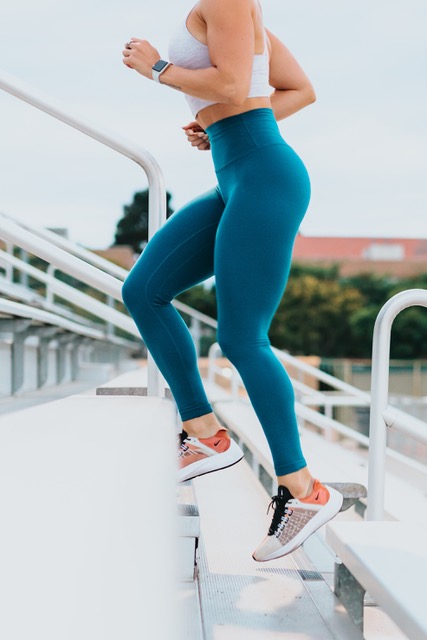Knees are a tricky joint. Your knee is the largest joint in your body, joining two of the largest bones in your body, the femur and tibia; as well as the fibula and knee cap. This complex hinge joint flexes and extends your leg and is the most commonly injured of all the joints, especially for outdoor enthusiasts. Injury can affect ligaments, tendons, cartilage, meniscus, and bones surrounding the joint. The knee bears a lot of weight and is designed to perform a number of tasks:
• Support the body in an upright position
• Raise and lower the body
• Provide stability
• Provide impact absorption
• Propel the body forward
• Allow the legs to twist
When knees are stressed, they are more vulnerable to injury. With awareness and proper care, you can reduce chance of injury. Here are a few tips to save your knees.
1. Warm up
Everyone knows that a warmup is crucial prior to any kind of physical activity, including stretching. It’s important to warm up before any activity to slowly raise your heart rate and gradually increase circulation. This will oxygenate muscles, speed up nerve impulses, and warm muscles and ligaments. Warming up not only makes your muscles more pliable, it protects your joints by lubricating them with your body’s own synovial fluid, which nourishes cartilage and keeps joint stable.
2. Lube Your Joints
The knee is a synovial joint, meaning the bones are joined with a fibrous joint capsule and inner synovial membrane and secretes synovial fluid into the joint itself. This fluid is made up of proteins derived from blood plasma and has the consistency of an egg white. With movement it reduces friction and increases shock absorption within the joint.
Keep in mind that whenever you put a joint through its natural range of motion synovial fluid enters that joint. For your knees, this simply means bending and extending your leg. A simple way to include joint lubrication into your daily routine is to start with your lower body and move upward—from ankles to hips and wrists to shoulders.
3. Practice Balance
Balance is an aspect of fitness that is so often overlooked. As we age, we are all at risk of falling, tweaking joints, and breaking bones—and poor fitness and balance skills make us more vulnerable. Balance requires strength, body awareness and focus. Working on balance brings together the mental and the physical, connecting mind and muscle in a single task.
Balance Exercise
• Stand on flat ground with your hands in your peripheral vision.
• Stand on your right foot and lift your left knee up and hold for 5-30 seconds. Don’t worry if you are wobbly, just relax and connect with your center of mass, right below your navel.
• If this is too easy, close your eyes and stand on your right foot.
• Switch legs. Work on bettering your time.
4. Proper Footwear
The number one piece of equipment for any outdoor enthusiast is a good fitting, functional pair of shoes. Having the right footwear for the activity and terrain is vital. There are two main types of shoes that are best suited to outdoor pursuits.
• All-Terrain shoes are great for rural environments and off-road running and hiking. This type of shoe supports climbing, descending, and traversing uneven ground, and will help you hold onto wet rocks and roots.
• Shoes for walking and running on the road work well in an urban environment. Their firm construction protects your feet on pavement and concrete.
Don’t take shortcuts with your footwear. Problems in your feet eventually spread to other areas of the body, including ankles, knees, hips and low back.
Back To Blog

